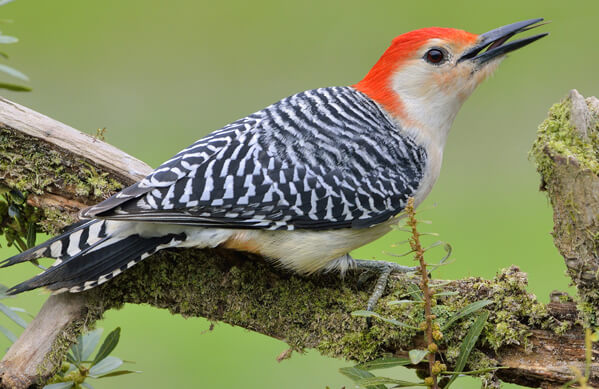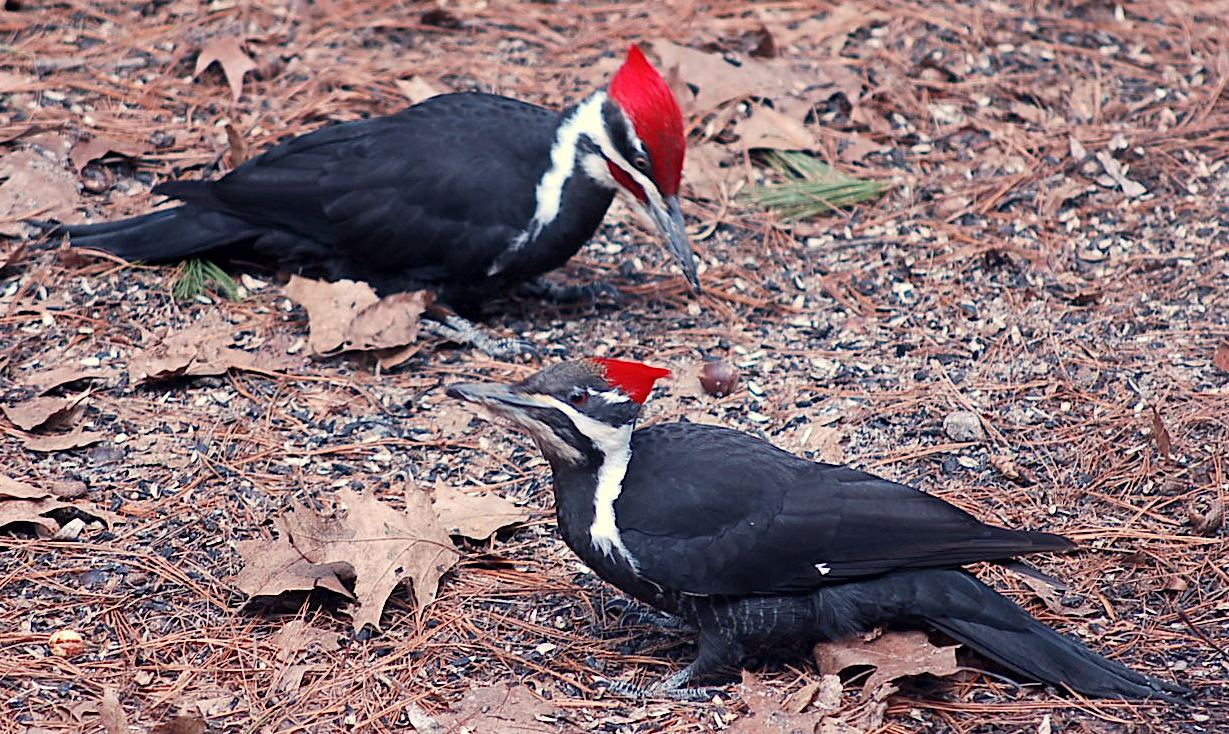Discovering Woodpeckers in Florida: Variety Diversity and Nature
Discovering Woodpeckers in Florida: Variety Diversity and Nature
Blog Article
Woodpeckers Unleashed: Discovering the Wonders of These Skilled Tree Mountain Climbers
Woodpeckers, with their distinctive markings and balanced drumming resembling via wooded areas, hold a distinct area in the avian world - Woodpeckers in Florida. As we delve into the detailed details of woodpeckers' nesting routines, feeding strategies, and the continuous preservation initiatives to safeguard these exceptional birds, a much deeper admiration for their place in nature unfolds.
Anatomy and Adaptations
When analyzing the anatomy and adjustments of woodpeckers, one can observe exceptional functions that make it possible for these birds to flourish in their specialized environmental niche. Woodpeckers are geared up with a suite of special physiological features that assist them in their woodpecking behavior. One of one of the most popular features is their strong, chisel-like beak, which is specialized for boring right into wood to uncover pests or create nesting cavities. This beak is sustained by strong neck muscular tissues and an extremely established skull structure that works as a shock absorber, enabling woodpeckers to continuously peck at trees without creating brain injury. Additionally, woodpeckers have zygodactyl feet, with 2 toes facing forward and 2 encountering in reverse, providing a company hold on tree trunks while they look for food or drum for interaction.
Additionally, woodpeckers have a distinct tongue framework that is long, barbed, and sticky, allowing them to remove bugs from holes in timber. This specialized adaptation enables woodpeckers to make use of a food resource that is inaccessible to several various other bird varieties. On the whole, the anatomy and adaptations of woodpeckers showcase the amazing evolutionary services that have actually allowed these birds to thrive in their arboreal habitat.
Drumming Actions
Having actually discovered the composition and adaptations of woodpeckers, the emphasis now moves to recognizing their drumming behavior, a distinctive aspect of their interaction and territorial display screens. Drumming is a vital type of communication amongst woodpeckers, offering multiple objectives such as establishing areas, attracting mates, and signaling alarm system. Each woodpecker varieties has an unique drumming pattern that helps people recognize members of their very own varieties and identify them from rivals or predators.
Woodpeckers produce drumming audios by rapidly pecking on powerful surface areas such as dead trees, utility poles, or perhaps steel objects, developing a collection of rhythmic beats. The intensity and rate of drumming can vary based on the purpose; for example, a quick drumming series might signify hostility towards trespassers, while a slower and softer drumming pattern can suggest courtship (Woodpeckers in Florida). In addition, woodpeckers might change the regularity and period of their drumming to share details messages properly
Nesting Behaviors
Checking out the nesting practices of woodpeckers discloses remarkable insights into their reproductive habits and habitat choices. Woodpeckers are recognized for their one-of-a-kind nesting choices, usually excavating tooth cavities in trees to develop protected rooms for elevating their young. These cavities serve not just as a nesting site yet also as a safe and secure haven from killers and harsh weather.
Woodpeckers exhibit a high degree of integrity to their nesting sites, frequently returning to the same area time after time. This behavior highlights the value of ideal habitat accessibility for their reproductive success. The selection of a nesting site is crucial for woodpeckers, with factors such as tree varieties, elevation, and degeneration stage playing significant roles in their decision-making procedure.
Remarkably, some woodpecker species are recognized to excavate several tooth cavities within their area, offering themselves with alternate nesting choices. This strategy may act as a type of insurance versus potential risks or disturbances to their primary nesting site.

Feeding Methods
One of the most distinct feeding habits of woodpeckers is drumming, which involves fast pecking on trees to reveal pests beneath the bark. Woodpeckers are additionally recognized to dig deep into cavities in trees to gain access to surprise why not find out more insect larvae or sap. Some varieties, like the acorn woodpecker, shop nuts in specifically created holes called granaries.
Conservation Efforts
Amidst the intricate feeding techniques displayed by woodpeckers, the preservation efforts aimed at guarding these remarkable birds play an essential duty in protecting their environments and populations. Woodpeckers face numerous threats to their survival, consisting of environment loss due to logging, environment modification altering their environments, and collisions with manufactured frameworks such as structures and lorries - Woodpeckers in Florida. Guardians are actively working to address these difficulties and make sure the lasting wellness of woodpecker types

Education and learning and public understanding campaigns are additionally essential components of woodpecker conservation efforts. By raising awareness regarding the value of these birds in keeping healthy woodland ecosystems, conservationists can garner assistance for habitat conservation initiatives and promote accountable land management practices. With collective initiatives in between scientists, policymakers, and local communities, we can interact to secure a future where woodpeckers grow in their all-natural habitats.
Final Thought

Report this page